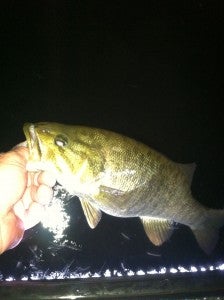Night time lake tactics
Published 11:43 pm Wednesday, August 6, 2014
Summertime fishing can be tough; at least some years are tougher than others. This year seems to be one of those tough years. What can an angler do when the fish seem to disappear? While there is a whole list of options to try, fishing at night may be the best.
While fish are cold blooded, and react different than us to temperature changes, they are still affected. The heat of mid to late summer can be very stressful on all fish. Increased water temperatures, a smaller slice of the water column that has the right combination of dissolved oxygen and cooler temperature, changes in baitfish habits, and the increase of the human presence on water can make fish adapt to the changes.
One way fish adapt to the fore mentioned changes is to feed at night. While it is believed by many that large predator fish are nocturnal, many fish are predominately sight feeders. But God has given fish the tools and ability to cope with the darkness of night.
Generally speaking, fish will move to shallower water (that is relative) as the light lowers. Fish, like the largemouth bass, will often be in water less than 2 ft. deep, when just a few hours before they may have been 30 ft. deep, or several hundred yards off shore.
Fish still have to deal with the stresses of the heat and oxygen, so they may be shallow for a short amount of time to feed up as quickly as they can before returning to the “comfort zone”.
Fishing shallow points, flats, or even seawalls are good places to start. Those that are near deep water are often the best, where fish have to move the shortest distance to find food.
While there are many different theories on times to fish at night, I have had the most success fishing from 30 minutes before dark, and then the first 2 hours after dark. I believe the fish are waiting on low light, and move shallow the first chance they get. Some anglers believe the time from 1-3 a.m. is the best time for bigger fish; this theory just hasn’t worked for me.
An old school train of thought is to fish the color of black after dark. Sound strange? Well maybe, but actually fish can see silhouettes of solid colors better in the dark. But our mountain lakes have clearer water than the lakes most articles are written about, and I have found that the same colors that work in daylight hours work well after dark.
Green pumpkin, watermelon, and similar colored soft plastics that work great in the day work just as good after dark. White spinnerbaits and buzzbaits work well too. Topwaters, crankbaits, just use what you would in the day time.
The two main keys I feel are timing, since the fish are only going to feed for a short amount of time, and depth. I stated earlier shallow is relative. Fish may still be 20 ft. deep, if they have been in 40 ft. of water during the day. And certain species prefer deeper water than say the largemouth bass.
Remember, although the air temp will decrease rapidly after dark, the water cools much more slowly, so when you catch a fish, handle it minimally and get it in the water as soon as possible. You may get away with keeping a fish in the livewell for a picture when the water is 60 degrees, but 85 degrees is a different story.





